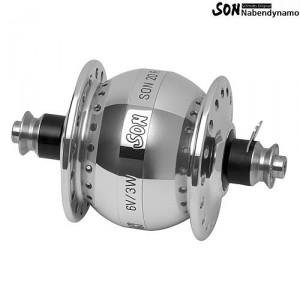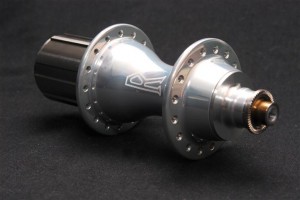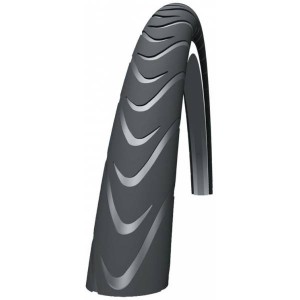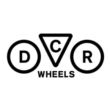 Touring wheels are something we have offered since the beginning of DCR Wheels. They are what originally captured my interest in cycling many years ago and indeed my interest in wheels, as I was given a pair to test for the CTC magazine (now Cycling UK). I still have the article somewhere and most of the parts of the wheels, which have since been retired, after around 10,000 miles and 3 rear hub rebuilds. They transformed the bike’s capability, stiffness and braking performance. On countless occasions they took Iona and I up hills with her sitting on the rack and our luggage mounted on a low rider on the front. We often used to get around that way. They even moved me house once – over the course of something like 12 trips fully loaded. A good touring bike has to have a pair of good touring wheels.
Touring wheels are something we have offered since the beginning of DCR Wheels. They are what originally captured my interest in cycling many years ago and indeed my interest in wheels, as I was given a pair to test for the CTC magazine (now Cycling UK). I still have the article somewhere and most of the parts of the wheels, which have since been retired, after around 10,000 miles and 3 rear hub rebuilds. They transformed the bike’s capability, stiffness and braking performance. On countless occasions they took Iona and I up hills with her sitting on the rack and our luggage mounted on a low rider on the front. We often used to get around that way. They even moved me house once – over the course of something like 12 trips fully loaded. A good touring bike has to have a pair of good touring wheels.
What is a touring bike?
I am aware there is a risk of this turning into a real essay, so I will try to be as concise as possible. I don’t want to overlook anything fundamental in pursuit of keeping this article brief though…
Let’s start by defining a touring wheelset and what someone should expect of it. Well, traditional touring would normally mean mudguards, rack, panniers, maps, perhaps a tent and stove and food and water. However, there is also a lot of growth in credit card touring, bikepacking, adventure and endurance cycling. I want to draw a distinction between credit card touring, endurance cycling and some adventure cycling with what I consider to be traditional touring. If you want to have a set that suits the former, we can certainly cater for that, however what you are looking for is more likely a standard road or mountain bike wheelset with built in serviceability, durability, reasonable performance and reliability. Touring wheelsets though, are heavily burdened and need to be built to accommodate that to keep them reliable You may get or have got lucky with a different set up until now, but it is best to get something fit for purpose.
Even when it comes to traditional touring, rider weight plays a huge part. A 110kg rider with 40kg of luggage is quite a different load to a 55kg rider with 40kg of load. One definitely needs specific touring kit and the other would probably suit conventional kit as well. The sets we will discuss here can all take a minimum of 130kg for rider and luggage – some, considerably more. That makes them suitable alternatives for heavier riders as well, especially for those on mountain bikes, touring bikes or hybrids. Touring wheels generally work well as commuting and winter wheels too.
Wheel diameter
Well, the chances are you already have the bike, so I would imagine that is already determined. The majority of touring bikes are 700c (622 dia) and that is absolutely fine. However, a smaller number of normally more trekking focused bikes, where luggage is taken off road in the most extreme conditions, 26” (559) is generally favoured. 26” wheels are stronger, but 700c generally rides better, especially on the road.
Brakes
There are alternatives out there, but for the most part all touring bikes have either something like a cantilever brake for good clearance and easy use of mudguards, although other rim brakes are still regularly used. Alternatively, there is a major growth in the use of disc brakes – more commonly mechanical because they are easily serviced by the roadside; a bodge is more likely to work and they are easier to get fixed across the world. It is also easier to carry spares for them. For the most part, when it comes to wheelsets, we can just do either and there is generally a sound alternative for both. It just needs to be specified what brake type you have. If you are doing full touring and you are using disc brakes I would strongly advise a minimum rotor size of 160mm.
Axles
We have an article here called ‘axle interfaces and rotor type’ which will provide more detail but the use of through axles is rare on touring bikes. Generally axles are rare on a touring bike. Despite their being perfectly straightforward to accommodate on a wheelset and their being generally actually stronger, they are less easy to fit in a steel frame. So I am going to assume quick release for all of these wheelsets. Traditionally touring bikes would have come with forward facing dropouts and 126mm spacing with a screw on freewheel. I would strongly advise in the interests of strength that a minimum of 130mm is used and ideally 135mm with a freehub bodied system rather than screw on freewheel. If you do want to do laden touring on a freewheel I would only advise the Royce screw on freewheel hub. The 17/4 steel axle used there is about as strong as any you could find anywhere.
Dynamos
You don’t have to run a hub dynamo. However it is a neater, more effective, more efficient and more reliable system. A dynamo historically would have provided very limited lighting. However now it can easily power bright front and rear lights. The brightest front is probably the Bulsch and Muller IQX, however the Cyo IQ Premium is also a great alternative. There are nice lamps from Supernova and Schmidt too.
When you are not using the dynamo for powering lighting the drag is greatly reduced (at least on the decent hubs it is). There is still some drag – if you turn the axle it will feel like a lot. That is because the magnets repel and attract in succession, so it feels like a lot more than it is. If you spin the wheel in the fork, it should run quite freely, although not for as long as a conventional hub would. Instead of leaving the hub to run freely, you can instead tap off the capacity and run a charging system. That can charge some devices on the fly, although some sort of electronics is required to do this. Ideally, you would also have some sort of bank battery that can receive a trickle charge from the dynamo and dump charge your device, be it a phone, garmin, or potentially even some laptops. However, you must remember the hub only provides 3 watts of power, so if you do want to charge a thirsty device it will take a lot of pedaling! The best device really for this purpose is the Bulsch and Muller E-Werk with Cache battery.
A dynamo is a great option for anyone who is going to spend a long time without power but requires devices to keep running. It is also a good option for anyone who wants very reliable lighting, so it does also work for winter wheels and commuting wheels.
When it comes to hub choice, in my opinion, there only is one choice really – Schmidt. I often say that if Schmidt made rear hubs, I’d probably sell loads of those too. Schmidt is probably the most reliable hub we sell as a hub generally. It happens to also deliver 3w of power whenever you need it. When you are looking at dynamo options you are looking for maximum reliability. So choose a hub that is reliable and builds into strong, stable wheels. I run a Schmidt on my tourer/winter commuter. It is on it’s second rim already. Schmidt say you should service your hubs ideally every 50,000km, however you can push that to 100,000km if you need to. It is a bold claim and a perfect hub for long mileage in all conditions, often with loading. It is a great choice.
Hubsets
You may not find yourself using a conventional hubset at all – partly because of the use of a dynamo and potentially with the use of an IG hub – we’ll get to that in a bit. However, assuming you do want a front and/or rear conventional hubset, here are some things to consider:
I now disagree with the use of cup and cone bearings on pretty much any wheel. I can appreciate they play a role in cheaper wheels, however they do require adjustment, that requires cone spanners which is an annoying thing to take around. That can quite easily be done wrong and I have seen incorrect adjustment undertaken even by professional mechanics. Incorrect adjustment can lead to damage of the balls, cones and cups or even crush the hub. When it comes to cones, balls and cups, the first two can be replaced, the final cannot. Normally you will only find cup and cone bearings now on very cheap hubs or shimano hubs – and my advice is to avoid them. We have built with them over the years but in my experience, if you are touring, you don’t want to be worrying about play in your hubs when you could have thousands of miles left to go.
Given that, I would also rule out anything other than a radial cartridge bearing. There are some very good hubs out there that do use angular bearings which have a preload on them. Angular contact cartridge bearings are definitely a better option because if they are damaged, the whole unit can be replaced, however ideally it wouldn’t need to come to that because you have a cartridge which eventually wears out and then can simply be replaced at convenient intervals.
Hubs that I would consider to be quite good for touring but potentially less than ideal are the following:
White Industries – CX-11 for example or MI5. However, these have lower rider limits and the bearings last less long than some other hubs, so better for lighter use and shorter distances.
Chris King – ISO and Classic – these are a lot of money. They are very durable and you can get versions with steel freehub bodies which is ideal. However, they do have angular contact cartridge bearings so they will need periodic adjustment and servicing.
Royce, Titan and Venus hubs – these would tick all of my boxes, except, the rear hubs can accept a maximum of 14g spokes. So the strongest wheels will not use Royce hubs. Although I would wager Royce hubs are among the very strongest out there. Royce views spokes as potentially sacrificial – so they would say use a 14g spoke, if it breaks, replace it – if your hubshell brakes, you are in real trouble. In contrast, I like 13g elbowed spokes on touring wheels ideally and shells shouldn’t fail on a decent hub, although it can, on rare occasions happen, generally with those using exotic alloys.
DT Swiss – something like the 350 is a good option generally. Reliable, durable, strong. However, they do also use an aluminium freehub body and I still generally like to see a steel freehub body on a touring hub. They work well for adventure and endurance riding though and an alloy freehub is generally fine when you have a good quality cassette fitted to the appropriate torque (40nm).
Hubs that tick all the boxes:
DCR Touring range – these have big shells, big axles, loads of bearings (4 front, 6 rear – all ABEC 5, TPI branded and treated for durability), a reliable freehub design, radial sealed cartridge bearings. They are drilled specifically to accommodate 13g spokes, they can take a variety of axle interfaces. Steel freehub bodies too. The hubs come apart with 5mm allen keys, which is about as standard a tool as it gets. One small potential downside is you cannot run them with a Campagnolo freehub body. The hubs themselves are particularly good value – £129/pair for rim brake, £150/pair for disc brake.
Phil Wood touring hubset – If someone were to ask me, what is the toughest hub you can offer, it would almost certainly be Phil Wood. Steel freehub, big bearings, big, thick, heavy steel axles, large shells. You can have disc or rim brake versions. In terms of absolute maximum reliability, I would say they probably don’t get that crown. I would like to see the hubs with individually sprung pawls and ideally with their pawls sitting on a larger diameter freehub seat. However, 5 pawls, each double row is certainly capable of receiving enormous torque and Iona and I use a Phil hub on the back of our tandem.
Internally geared hubs
You could use a shimano Alfine or similar hub on a touring bike. However, experience has taught us that if you want a very durable, very reliable and versatile rear IG hub for touring, the only option really is Rohloff. We can offer the full range of hubs there, they do add weight and you will have to change the rear sprocket perhaps a little more often than you expect, however combining something like a Rohloff with a Schmidt has to be one of the ultimate touring wheelset choices. You need to get the right hub and fitments for your bike, so just let us know what you are looking to do and we can advise there.
Build and spokes
If you build with a Rohloff at the back,you need to build the wheel differently. We have another article covering details on that. However, for all other options, where possible, I always like to use Sapim Race spokes throughout except drive side rear and disc side front if applicable where I like to see the Sapim Strong spoke.
Rims
Well there are quite a range of rims out there, but ideally we like to keep these things simple specially when it comes to touring where strength is king. Rims like the DCR 24/25 or the H Plus Son Hydra or NoTubes Grail are fine with disc brakes as long as the weight doesn’t get too high and similarly there is the DCR 30mm for rim brake with the same rules applying. All of these have welded joints and all are tubeless compatible. However, assuming you are looking at more laden touring, I would say that the following would be good options:
Ryde Sputnik – an economical rim and you certainly get a lot of aluminium for your money. It is a simple, traditional design, very tough with a basic joint.
Velocity Chukker – stiffer than the Sputnik, not that that is a major consideration. Available in a disc and rim brake  version, this has a more sophisticated joint and is the strongest rim that we sell. If the Chukker isn’t strong enough, fundamentally you are going to need to find a different solution – i.e. a trailer. Guideline weight limit is something like 250kg. Velocity believe that the rim will not be the weakest link and that the hubs will always fail first.
version, this has a more sophisticated joint and is the strongest rim that we sell. If the Chukker isn’t strong enough, fundamentally you are going to need to find a different solution – i.e. a trailer. Guideline weight limit is something like 250kg. Velocity believe that the rim will not be the weakest link and that the hubs will always fail first.
DT TK540 – DT put a system weight limit of 130kg on these rims. That should be plenty for the majority of riders in the majority of conditions, however there are perhaps some circumstances when the Chukker is required as an alternative. The rim is considerably lighter than the Chukker and Sputniks and it is the only one of the three that has a welded joint. It is made to a particularly high standard and is an excellent touring rim. It is also comfortable. This is the rim that I use on my tourer.
Tyres
As far as I am concerned there are three key tyres to consider if you are looking at touring and it depends on how much you are looking at going fast, how much you are looking at taking load and how much you are looking for maximum reliability and durability:
Schwalbe Marathon Plus – a very heavy, slow tyre, but you will not puncture it…ever. When I find a punctured wheel with a Marathon Plus I always assume it is either a defective innertube or a problem rim tape. I have never seen anything go through one. I have heard rumours of problems in the sidewall, it is possible to get a pinch flat, but it is very, very reliable. Most people run them until the tyre turns blue – i.e. you have got down to that impenetrable layer.
Schwalbe Marathon Supreme. Tom, myself and Iona all use these tyres. They weigh less than half what a  marathon plus weighs and they roll faster, the grip is good too. They aren’t immune to punctures, but they don’t happen often. A lovely touring tyre and I think a great alternative if you don’t mind the occasional puncture. My opinion is, you save enough time riding it to occasionally stop and change a puncture.
marathon plus weighs and they roll faster, the grip is good too. They aren’t immune to punctures, but they don’t happen often. A lovely touring tyre and I think a great alternative if you don’t mind the occasional puncture. My opinion is, you save enough time riding it to occasionally stop and change a puncture.
Schwalbe S-One. So this is more of an endurance tyre, or a gravel tyre or similar. However, if you are an adventure cyclist or you are running a more performance focused touring set, it is a nice option. It is very fast, very comfortable, very grippy and when setup tubeless, really reliable as well. The wear isn’t as good as something like a Marathon Plus, but they are very different tyres really.
How do I buy some?
Well, all of the components discussed here are available through DCR Wheels, so get in touch. Prices do vary but we always remain competitive. We have been demonstrating only good quality components here. There are cheaper wheels out there but these are all good touring components. To give you an idea on pricing – an economical set would be DCR rim brake Touring hubs, Race/Strong spoke combo with Ryde Sputnik rims. Suitable for a broad range of a touring applications, commuting, winter training etc – Shimano 11s compatible with spacer for other gearing, available in 130mm and 135mm spacing – £259/pair.

